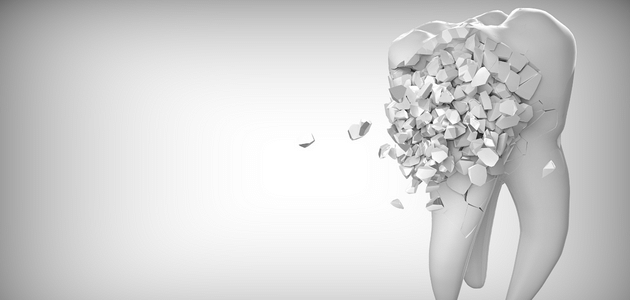NOTRE SOLUTION N°5 : SMILE RED FLAG
LE DÉFI ESTHÉTIQUE : LES DENTS DU SOURIRE
UNE DENT DU SOURIRE EST PERDUE OU S'EST BRISÉE
NOS IMPLANTS EN MCI REMPLACENT VOS DENTS DU SOURIRE
LE COSMÉTIQUE EN CÉRAMIQUE POUR UN PARFAIT MIMÉTISME
UNE SEULE INTERVENTION "ONE SHOT" - SOUS SÉDATION IV
REMPLACER les DENTs Du sourire
le plus grand DÉFI ESTHÉTIQUE
Un des plus grands défis techniques de la dentisterie est de remplacer UNE DENT DU SOURIRE par une couronne en céramique avec un parfait mimétisme
Soit, la couronne avec un cosmétique en céramique le plus esthétique possible est posée sur la racine naturelle de la dent, si elle peut être sauvée. On parle d’une couronne sur implant.
Soit, la couronne avec un cosmétique en céramique le plus esthétique possible est fixée sur un implant dentaire, en remplacement de cette racine si elle a du être extraite. On parle d’une couronne sur dent naturelle.
Pour les patients qui ont perdu ou qui vont perdre à bref échéance les dents de devants, « avoir des dents du sourire » est un véritable appel “au secours”!
C’est pour cela que nous avons appelé ce chapitre notre Solution Numéro 5 le : « Smile Red Flag » : le drapeau rouge est brandi pour avertir d’une tempête.
Chez Smile Design, nos médecins dentistes et implantologues ont une série de protocoles à la fois prothétique et/ou chirurgicaux pour réparer la plupart des traumatismes. Ils sont résumés dans ce chapitre.
Dans le cas de la perte des dents antérieures, aucune prothèse dentaire amovible (appareil dentaire) ne pourra reproduire l’effet esthétique des dents naturelles émergeant de la gencive. Seul le remplacement de la racine naturelle par un implant dentaire peut prétendre atteindre cette esthétique du sourire.
QU’EST CE QUE LES « DENTS DU SOURIRE » ?
Les « dents du sourire » sont principalement les dents antérieures et supérieures. C’est à dire : les incisives centrales, les incisives latérales et les canines définitives. Quelque fois, si la cavité buccale du patient est large les prémolaires sont impliquées dans le sourire ou le rire, ainsi que les premières molaires supérieures. C’est le rire « Julia Roberts ».
SI VOTRE SOURIRE A PERDU UNE DENT ALORS UN IMPLANT DENTAIRE POURRA LA REMPLACER
Un implant dentaire a pour rôle de prendre la place d’une dent extraite. Le chirurgien-dentiste vient insérer dans l’os de la mâchoire un implant dentaire, c’est à dire une racine artificielle en lieu et place de la dent manquante. Sur cet implant dentaire, il fixe ensuite une couronne prothétique dentaire avec un cosmétique en céramique. Celle-ci vient, à son tour, remplacer la couronne de la dent naturelle.
Remplacer une dent antérieure comme une incisive sans préjudice esthétique est désormais chose possible.
Grâce aux boosters de la cicatrisation les résultats sont encore plus esthétiques : les concentrés plaquettaires en auto-transfusion, comme les PRF viennent régénérer la trame collagenique osseuses et gingivale.
L’apport de ces protocoles novateurs permet de booster la cicatrisation de toutes les techniques de greffe osseuse et de greffe de gencive.
L’arrivée relativement récente des thérapies cellulaires, aussi appelés ingénieries cellulaires, comme les techniques à base de PRF – “Platelet-Rich Fibrin” – et du PRP – Platelet-Rich Plasma – dans les protocoles opératoires de pose d’implants dentaires, associés aux greffes osseuses et aux greffes muco-gingivales permet d’optimiser tous les protocoles de remplacement des incisives.
En particulier toutes les dents de devant, appelées « dents du sourire », qui doivent être remplacées à cause d’un traumatisme dentaire, d’une maladie de la racine dentaire ou d’un traitement d’orthodontie agressif ayant généré une rhysalyse iatrogène (résorption des racines dentaire, à la suite d’un traumatisme du au traitement orthodontie conduit trop violemment).
COMMENT GÉRER LE PRÉJUDICE ESTHÉTIQUE DU À LA PERTE DE VOTRE SOURIRE ?
La perte d’une ou de plusieurs dents antérieures et supérieures, c’est à dire une dent de votre sourire, peut entraîner une désocialisation, c’est à dire un repli sur soi.
Cela a de graves conséquences dans votre vie sociale tant du point de vue professionnel (refus à l’embauche), personnel (échec dans les tentatives de séduction) que dans l’image de soi (perte de confiance).
L’impact psychologique de la perte des dents est très délétère. Elle peut occasionner de graves préjudices sur la santé mentale comme financière des patients.
Le port d’une prothèse dentaire amovible (dentier), est un traumatisme le plus souvent vécu comme un handicap important, voir comme une mutilation.
Les appareils dentaires ne permettent pas de manger toutes sortes d’aliments et en particulier de les croquer.
Le dentier doit être retirée à chaque nettoyage, découvrant quotidiennement à la vue du patient la mutilation de sa bouche, ce qui rajoute au stress déjà existant.
A terme, le patient modifie ses expressions du visage pour ne pas dévoiler cette mutilation. Il en perd le sourire, au propre comme au figuré.
le CHOIX D'une technique pour remplacer les dents du sourire
Avec une couronne céramique sur un implant dentaire
Avec une couronne céramique sur la racine naturelle
VOUS ÊTES UNIQUE !
CAS CLINIQUES DE REMPLACEMENT DES DENTS DU SOURIRE
NOTRE SOLUTION 5 "SMILE RED FLAG" EN MCI
QUELLES SONT LES RAISONS D’UNE PERTE D’UNE DENT DU SOURIRE?
LES DENTS DU SOURIRE SONT PRINCIPALEMENT LES DENTS ANTÉRIEURES ET SUPÉRIEURES : LES INCISIVES CENTRALES et LATÉRALES ET LES CANINES.
QUELQUE FOIS, LES PRÉMOLAIRES SONT IMPLIQUÉES DANS LE SOURIRE OU LE RIRE

Les raisons sont multiples, mais citons les principales :
- La maladie parodontale ;
- Les caries dentaires ;
- Les soins iatrogènes ;
- Les agénésies dentaires ;
- Les traitements orthodontiques ;
- Les chocs ou accidents.
Nous avons déjà traité du déchaussement des dents à cause de la parodontite dans de nombreux chapitres.
Les maladies parodontales sont des maladies infectieuses qui détruisent l’os alvéolaire qui est le tissu osseux principal soutient de l’organe dentaire. Les parodontites sont responsables de 40% des extractions dentaires.
Ce qu’il faut retenir : c’est que si votre gencive supérieure semble être plus courte qu’avant et ne recouvre plus les racines de vos dents de devant alors vous avez surement une perte osseuse. Un bilan radiologique viendra faire le diagnostic différentiel avec une simple rétraction gingivale sans perte osseuse et une parodontite infectieuse. Dans les cas extrêmes une ou plusieurs dents peuvent être perdues.
Un abcès, à la suite d’une lésion parodontale verticale tout le long d’une racine dentaire est un cas d’extraction d’une ou plusieurs dents selon le cas.
Dans ce cas clinique, des greffes osseuses peuvent être envisagées pour reconstruire la perte verticale de volume d’os alvéolaire (os de la mâchoire dans lequel les organes dentaires sont fixées). Ensuite ou concomitamment, un ou plusieurs implants dentaires sont posés pour porter une prothèse dentaire implanto-portée esthétique.
Dans cette situation clinique, la gestion de l’esthétique est alors très délicate. La rétraction de la gencive et due à la résorption osseuse infectieuse causée par la parodontite. L’objectif est de bloquer la résorption horizontale du parodonte par un assainissement, combler la perte osseuse verticale, remplacer les racines dentaires manquantes. Le contour gingival ne pourra pas être plus haut que la récession générale sur les dents naturelles adjacentes.
A ce niveau il a y deux stratégies esthétiques :
- Soit valider cette relative disgrâce sur les nouvelles couronnes céramiques dentaires sur implants et créer un maquillage sur la céramique cosmétique qui imite un faux déchaussement des dents. C’est souvent le choix pour des patients masculins.
- Soit améliorer l’esthétique dentaire en posant des facettes dentaires sur les dents naturelles adjacentes pour avoir des couronnes dentaires blanches. C’est l’option de dentisterie esthétique choisit en général pour les patientes féminines.
Dans le cas d’une dent cariée trop loin sous la gencive, elle devra être extraite afin d’éviter de générer une infection au bout de la racine dentaire. Une carie même traitée par un composite ou un amalgame, type plombage, peut engendrer une nécrose de la dent. Si l’atteinte pulpaire n’est pas soignée à temps cela va aboutir à un abcès osseux au niveau l’apex de la racine. Sans presque pas de douleurs, l’infection arrive à un stade extrême de perte osseuse et la dents devra être extraite.
Souvent, les dents de sagesse poussent les dents vers l’avant et les incisives centrales définitives se chevauchent. Même avec une bonne hygiène dentaire et le brossage de la plaque dentaire avec un dentifrice et une brosse à dents adaptée, il est fréquent d’avoir à ce niveau des caries inter dentaires importantes.
Dans ce cas, il sera préférable d’associer la pose des implants avec l’extraction les dents de sagesses sous sédation dentaire avec un médecin anesthésiste.
Notre conseil: Même si vous pensez avoir des dents saines ayez le réflexe de faire une visite chez le dentiste et demander un bilan radiologique scanner en 3D, seul examen à être exhaustif, c’est à dire qu’il diagnostique toutes les pathologies dentaires qui peuvent passer inaperçu avec d’autre examens. Votre santé bucco-dentaire est à ce prix.
Les soins dentaires iatrogènes sont des actes pratiqués par un médecin dentiste pour soigner vos dents mais qui vont avoir des conséquences néfastes sur votre état de santé. C’est typiquement le cas de figure des traitements endodontiques qui vont générer des lésions radiculaires. Comme précédemment, les dents atteintes peuvent être extraites. La dévitalisation des dents est indiquée s’il y une inflammation de la pulpe dentaire ou s’il y a une nécrose de celle-ci.
Nous avons déjà traité la perte des dents à cause du traitement de canal mal conduit dans le chapitre « traitement endodontique ».
Les nécroses de la pulpe à bas bruit sont les plus sournoises car il n’y a pas de signaux d’alarme douloureux ou bien trop tard. Ces nécroses provoquent des kystes dentaires péri apicaux qui peuvent être très délabrant, impliquant l’extraction immédiate d’une dent du sourire comme une incisive ou une canine. Bien sûr, toutes les dents sont concernées par ce problème, mais les prémolaires et les molaires ont moins d’enjeu esthétique.
Les causes des inflammations chroniques qui provoquent des nécroses de l’endodontie sont multiples. Mais citons : les caries dentaires, la pose d’amalgames, de composites, la pose de facettes dentaires, de couronnes dentaires ou de bridge, trop invasifs et sur des dents non d’ores et déjà dévitalisées. Les traumatismes mécaniques ou chimique divers, comme des chocs ou bien même des blanchiments dentaires non adaptés pour le traitement des taches sur l’émail.
Les agénésies des dents définitives, sont diagnostiquées, chez le dentiste, entre 6 et 11 ans, au moment de la perte des dents de lait. L’absence d’éruption de la dent permanente, après la chute de la dent temporaire, met en lumière ce problème et un contrôle radiologique confirme l’absence des germes dentaires qui très souvent concerne les incisives latérales définitives.
Dans ce cas, un orthodontiste à l’aide d’un appareil dentaire, va réaliser l’alignement des dents de devant et grâce à un mainteneur d’espace, le temps d’attendre la fin de la croissance de l’enfant, des implants dentaires, avec leurs couronnes céramiques, pourront être posés à la place des dents manquantes.
Les soins dentaires iatrogènes sont des actes pratiqués par un médecin dentiste pour soigner vos dents mais qui vont avoir des conséquences néfastes sur votre état de santé. C’est typiquement le cas de figure des traitements endodontiques qui vont générer des lésions radiculaires. Comme précédemment, les dents atteintes peuvent être extraites. La dévitalisation des dents est indiquée s’il y une inflammation de la pulpe dentaire ou s’il y a une nécrose de celle-ci.
Nous avons déjà traité la perte des dents à cause du traitement de canal mal conduit dans le chapitre « traitement endodontique ».
Les nécroses de la pulpe à bas bruit sont les plus sournoises car il n’y a pas de signaux d’alarme douloureux ou bien trop tard. Ces nécroses provoquent des kystes dentaires péri apicaux qui peuvent être très délabrant, impliquant l’extraction immédiate d’une dent du sourire comme une incisive ou une canine. Bien sûr, toutes les dents sont concernées par ce problème, mais les prémolaires et les molaires ont moins d’enjeu esthétique.
Les causes des inflammations chroniques qui provoquent des nécroses de l’endodontie sont multiples. Mais citons : les caries dentaires, la pose d’amalgames, de composites, la pose de facettes dentaires, de couronnes dentaires ou de bridge, trop invasifs et sur des dents non d’ores et déjà dévitalisées. Les traumatismes mécaniques ou chimique divers, comme des chocs ou bien même des blanchiments dentaires non adaptés pour le traitement des taches sur l’émail.
La plus importante source d’extractions des dents du sourire comme les incisives centrales et les incisives latérales sont les traumatismes dentaires dus à une chute. Les sports violents, sans protège dents, conduise à des chocs directs ou des chutes en avant conduisent le patient à consulter un dentiste en urgence.
Il y a plusieurs cas de figures au traumatisme dentaire :
– Les dents sont traumatisées avec un saignement de la gencive : Après lavage de la plaie au sérum physiologique, il faut vérifier la gravité de la luxation, la vitalité de la dent et réaliser une contention. Ensuite, on vérifie radiologiquement, avec une radio panoramique et un scanner cone beam 3D, s’il y a des fractures ou des fêlures des racines ou une fracture de l’alvéole ou une fêlure.
Après cicatrisation de l’os alvéolaire le cas clinique est réévalué : Si les dents sont cassées au niveau de la racine ou la couronne dentaire sous le niveau osseux, si la mastication est douloureuse, s’il y a une résorption de la racine et/ou de l’os alvéolaire, alors il faut procéder à l’extraction des dents concernées et leur remplacement.
Suite à un choc violent, il peut y avoir une avulsion traumatique d’une ou plusieurs dents du sourire. Dans ce cas clinique, une réimplantation est toujours possible, si la dent est récupérée et placée dans du sérum physiologique (ou même du lait).
Si la dent est trop facturée ou perdue, il faut poser un implant dentaire pour la remplacer avec une couronne dentaire céramique. L’extrusion d’une dent ou une fracture peut concerner n’importe quelle dent du sourire comme une incisive ou une canine à la mâchoire du haut ou du bas, mais aussi les prémolaires ou les molaires, dans les secteur postérieurs. Le trauma peut s’accompagner d’une fracture de la mâchoire avec ou sans déplacement.



